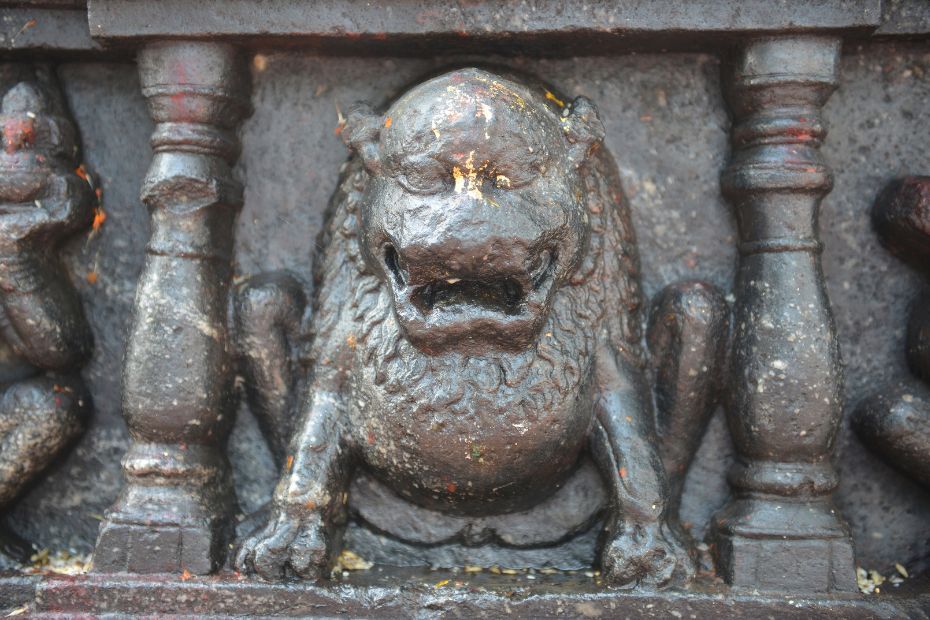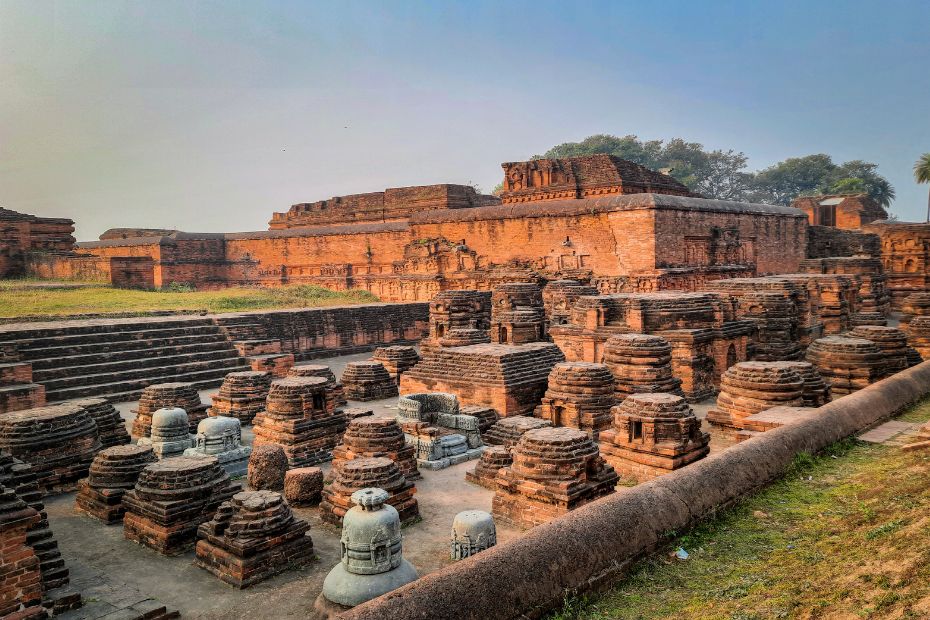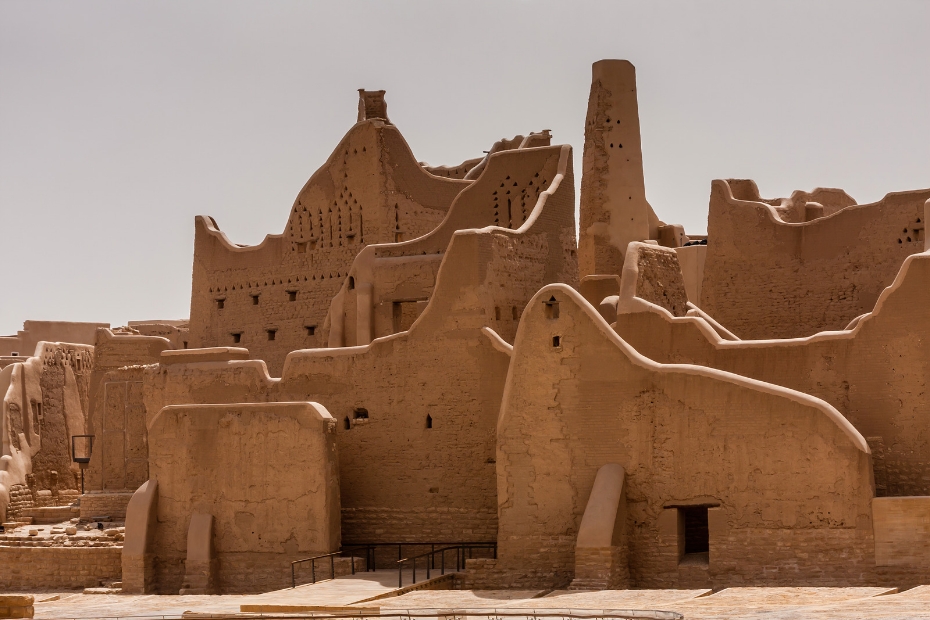Discover the rich history of Nalanda University, a renowned learning center in ancient India. Uncover its lasting impact on Buddhist philosophy, spirituality, and the quest for knowledge.
“The source of all the [Buddhist] knowledge we have, has come from Nalanda.“
Dalai Lama
The Dalai Lama’s statement highlights the tremendous impact that Nalanda University had on the development and dissemination of Buddhist knowledge. As one of ancient India’s most prominent learning centers, Nalanda attracted scholars and students from across Asia who studied and contributed to the wealth of knowledge housed within its walls.
Many significant Buddhist scholars, such as Nagarjuna, Aryadeva, and Dharmakirti, were associated with Nalanda University and played crucial roles in shaping the course of Buddhist philosophy and practice. The university’s curriculum covered a wide range of subjects related to Buddhism, including the teachings of Mahayana and Hinayana schools, as well as other fields such as grammar, logic, astronomy, metaphysics, and medicine.
Moreover, Nalanda University was a hub for intellectual exchange, fostering dialogue and debate among scholars from diverse cultural and religious backgrounds. This spirit of inquiry and open-mindedness significantly contributed to the developing and dissemination of Buddhist knowledge throughout Asia.
Given the immense wealth of knowledge that emerged from Nalanda University, it is no wonder that the Dalai Lama acknowledges the institution as the source of much of the Buddhist knowledge that exists today. The legacy of Nalanda continues to inspire and inform the study and practice of Buddhism worldwide.
Introduction
Imagine stepping back in time and wandering through the ancient corridors of one of the world’s first great learning centers. It is a place where scholars, philosophers, and scientists gather worldwide to share their knowledge and wisdom. You’ll have this experience when you visit the enigmatic ruins of Nalanda University, a UNESCO World Heritage Site in the eastern Indian state of Bihar. This blog post will guide you through this once-thriving academic hub’s fascinating history, architectural marvels, and cultural significance. So, get ready to embark on an unforgettable journey to Nalanda University, where the echoes of the past still resonate with the wisdom of ancient scholars.
History of Nalanda University
As you delve into the past, you’ll uncover the rich history of Nalanda University, which dates back to the 5th century CE. This esteemed institution was founded during the Gupta Dynasty, an era known for its profound contributions to Indian art, architecture, and literature. It’s no wonder that a university like Nalanda would emerge during this time to foster the growth of knowledge and intellectual pursuits.
During its heyday, Nalanda University was a renowned center for Buddhist learning and attracted scholars from far and wide, including China, Persia, and Tibet. It’s estimated that at its peak, the university accommodated over 10,000 students and 2,000 teachers. The institution was supported by patronage from various rulers, including the famed Emperor Harsha of North India, who maintained a strong connection with the university during his reign.
Unfortunately, like all great stories, Nalanda’s had its share of challenges. The decline of the university began in the 12th century when it was ransacked and destroyed by the invading Turkish Muslim army led by Bakhtiyar Khilji. This marked the end of a golden era for Nalanda, as centuries of accumulated knowledge went up in flames with the destruction of its invaluable library.
As you explore the ruins of Nalanda University, you’ll find yourself walking through centuries of history, appreciating the rise and fall of this great center of learning. The spirit of inquiry that once filled its halls may have been silenced, but the lessons of its past continue to inspire us today.

Architectural Marvels
As you meander through the sprawling complex of Nalanda University, you’ll be captivated by the architectural marvels that have withstood the test of time. Spread across 14 hectares, the university’s ruins glimpse its former glory and the sophisticated design that once characterized this great institution.
One of the most striking features you’ll notice as you explore the site is the vast array of monasteries and temples. There were once 11 monasteries and several temples, all meticulously arranged linearly. Each monastery was designed as a quadrangular structure, with a central courtyard surrounded by residential cells for monks. The monks’ cells were small and austere, a testament to their simple lifestyle and dedication to spiritual pursuits.
As you step into the remains of the temples, you’ll be awestruck by the intricate stonework and exquisite sculptures that adorn their walls. These temples were once centers of worship and learning, where the teachings of Buddhism were shared and revered. In addition to the religious structures, you’ll discover remnants of ancillary buildings, such as lecture halls, storerooms, and administrative offices.
Another architectural highlight that will captivate your attention is the magnificent stupa, a Buddhist relic structure that rises majestically above the surrounding ruins. The stupa served as a focal point for the university, symbolizing the convergence of spiritual and intellectual aspirations. As you stand before this towering monument, imagine the awe and reverence it must have inspired in those who walked these grounds centuries ago.
As you continue your exploration of Nalanda University, take a moment to appreciate the architectural achievements of a bygone era. Though now in ruins, these structures still speak to the ingenuity, artistry, and ambition of the people who designed, built, and inhabited this great learning center.
Curriculum and Learning
As you delve deeper into the world of Nalanda University, you may wonder about the subjects taught within its hallowed halls and the methods of learning employed. The curriculum at Nalanda was as diverse as it was comprehensive, catering to a wide range of intellectual pursuits.
The primary focus of Nalanda University was the study of Buddhism, with particular emphasis on the teachings of Mahayana and Hinayana schools. Students and scholars dedicated themselves to studying Buddhist scriptures, philosophy, and ethics. But the learning didn’t stop there. Nalanda’s academic offerings spanned many subjects, including theology, grammar, logic, astronomy, metaphysics, medicine, and even the fine arts.
The teaching methods at Nalanda were innovative and interactive, encouraging students to engage in critical thinking and spirited debates. It was believed that students could attain a deeper understanding of the material by challenging established ideas and subjecting them to rigorous scrutiny. This approach to learning created an environment where intellectual curiosity thrived, and scholars constantly pushed the boundaries of knowledge.
One of the most remarkable features of Nalanda University was its vast library, which housed thousands of manuscripts and texts. This immense collection of knowledge was meticulously organized and divided into three main buildings:
- The Ratnasagara (Ocean of Jewels)
- The Ratnadadhi (Sea of Gems)
- The Ratnaranjaka (Jewel-adorned)
It is said that the library’s collection was so extensive that it took several months for the manuscripts to burn when the university was attacked and destroyed.
As you immerse yourself in the world of Nalanda University, you’ll gain a deeper appreciation for the progressive and inclusive approach to education that once flourished here. The spirit of intellectual inquiry that permeated this ancient institution still holds valuable lessons for modern-day scholars and educators.
Notable Scholars and Alumni
As you journey through the rich history of Nalanda University, you’ll encounter the legacies of numerous notable scholars and alumni who have left an indelible mark on academia and beyond. These distinguished individuals contributed to the university’s prestige and played a pivotal role in shaping their time’s intellectual and cultural landscape.
One such luminary is Nagarjuna, a revered philosopher, and scholar often regarded as the founder of the Madhyamaka school of Mahayana Buddhism. His profound writings on the nature of reality and the concept of emptiness (śūnyatā) have had a lasting impact on Buddhist philosophy and continue to be studied by scholars today.
Another eminent figure associated with Nalanda University is Aryadeva, a disciple of Nagarjuna and a prominent philosopher in his own right. Aryadeva’s works, such as the Catuḥśatakaśāstra, expanded on Nagarjuna’s teachings and further developed the philosophical foundations of the Madhyamaka school.
As you delve deeper into the annals of Nalanda’s history, you’ll also encounter the renowned Chinese traveler and scholar Xuanzang, who journeyed to India in the 7th century to study Buddhism at the university. His detailed accounts of his travels and experiences at Nalanda have provided historians with invaluable insights into the workings of the university and the cultural milieu of the time. Xuanzang’s translations of numerous Buddhist texts from Sanskrit into Chinese also played a critical role in disseminating Buddhist teachings throughout China and East Asia.
These are just a few examples of the extraordinary individuals who graced the halls of Nalanda University. As you explore the ruins of this once-thriving center of learning, take a moment to reflect on the lives and accomplishments of these great scholars. Their tireless pursuit of knowledge and wisdom continues to inspire and guide us on our intellectual journeys.
The Rediscovery and Excavations
As you venture through the storied history of Nalanda University, you may be curious about the process of rediscovering and unearthing this ancient center of learning. After the university’s destruction in the 12th century, its ruins lay hidden beneath layers of soil and vegetation, waiting to be rediscovered and brought to light.
It wasn’t until the 19th century that the first systematic excavations at Nalanda began, initiated by the Archaeological Survey of India. Over the years, numerous archaeological teams have worked tirelessly to uncover the remnants of the university, revealing a complex network of monasteries, temples, and other structures that once comprised the thriving academic hub.
These excavations have also unearthed a wealth of artifacts, including sculptures, coins, seals, and pottery, which have provided valuable insights into Nalanda’s daily life and culture during its heyday. Many of these artifacts are now on display at the Nalanda Archaeological Museum, offering visitors a tangible connection to the past.
As you explore the ruins of Nalanda University and marvel at the architectural and artistic treasures brought to light, it’s hard not to be struck by the incredible efforts and dedication of the archaeologists who have painstakingly excavated this ancient site. Their work has not only helped preserve and restore the physical remains of the university but also ensured that Nalanda’s rich history and legacy continue to be celebrated and appreciated by generations to come.
UNESCO World Heritage Status
As you immerse yourself in the enchanting world of Nalanda University, you’ll no doubt be intrigued by its designation as a UNESCO World Heritage Site. In 2016, this prestigious title was conferred upon Nalanda, recognizing its immense historical, architectural, and cultural significance. But what exactly does this status entail, and how has it impacted the preservation and restoration efforts at the site?
Being designated a UNESCO World Heritage Site is no small feat. This title is awarded only to landmarks or areas that possess exceptional value to humanity and meet specific criteria, such as representing a masterpiece of human creative genius or exhibiting an important interchange of human values. By achieving this status, Nalanda University has joined an illustrious list of global treasures, including the Great Wall of China, the Pyramids of Egypt, and the Taj Mahal.
This recognition has brought much-needed attention and resources to the ongoing efforts to preserve, restore, and promote Nalanda University. Increased funding and international collaboration have enabled further excavations and research at the site, helping to uncover more of its hidden secrets and enhancing our understanding of its rich history.
Moreover, the UNESCO World Heritage designation has also boosted tourism to the area, with visitors flocking from around the world to explore the ruins and absorb the wisdom of this ancient learning center. This influx of tourists has, in turn, spurred the development of local infrastructure and provided new opportunities for the surrounding communities.
As you traverse the grounds of Nalanda University, take a moment to appreciate the importance of its UNESCO World Heritage status. This prestigious title validates the remarkable achievements of the scholars who once walked these halls and ensured their legacy lives on for future generations to appreciate and be inspired by.
Nalanda Archaeological Museum
As you embark on your journey to uncover the fascinating world of Nalanda University, visiting the Nalanda Archaeological Museum is an absolute must. Situated near the ruins, this museum houses an incredible array of artifacts unearthed during the excavations, offering a unique window into the lives of the scholars, monks, and artisans who once inhabited this illustrious learning center.
Upon entering the museum, you’ll be greeted by a wealth of intricate sculptures, many of which were once part of the university’s temples and monasteries. Marvel at the exquisite craftsmanship and artistry on display as you take in the beautifully carved stone and bronze figures of the Buddha, Bodhisattvas, and various Hindu deities.
As you explore the museum’s collection, you’ll also encounter an assortment of coins, seals, and inscriptions that provide valuable insights into the economic and administrative aspects of Nalanda University. These artifacts, some dating as far back as the Gupta period, are tangible reminders of the vibrant and diverse community that once thrived at the university.
Another captivating feature of the museum is its extensive pottery collection, including terracotta figurines, plaques, and various valuable objects. These items offer a glimpse into Nalanda’s daily lives and material culture, allowing you to imagine the bustling activities that once took place within the university’s walls.
As you wander through the halls of the Nalanda Archaeological Museum, you’ll no doubt be struck by its collection’s sheer depth and breadth. The artifacts on display serve as a testament to the rich cultural heritage of Nalanda University and the tireless efforts of the archaeologists who have painstakingly excavated and preserved these treasures for future generations to enjoy and appreciate.
Exploring the Surrounding Region
As you immerse yourself in the captivating world of Nalanda University, don’t miss the opportunity to explore the surrounding region steeped in history, natural beauty, and rich cultural heritage. The area surrounding Nalanda offers a diverse range of attractions that cater to various interests, ensuring that your visit is as enriching as it is memorable.
One such destination you must take advantage of is the ancient city of Rajgir, located just 15 kilometers from Nalanda. Rajgir was once the capital of the Magadha kingdom and held immense historical and religious significance, particularly for Buddhists and Jains. Wander through the remnants of the city’s ancient fortifications, explore its numerous temples and monasteries, and take a leisurely ride on the aerial ropeway to enjoy a panoramic view of the lush landscape.
For nature enthusiasts, a visit to the Barabar Caves is highly recommended. Situated approximately 60 kilometers from Nalanda, these ancient rock-cut caves are India’s oldest surviving examples of Buddhist architecture. Marvel at the intricate carvings and inscriptions that adorn the walls of these caves, and soak in the serene atmosphere as you explore the surrounding hills and forests.
Another must-visit destination near Nalanda is Bodhgaya, around 110 kilometers away. As the site where the Buddha attained enlightenment under the Bodhi tree, Bodhgaya holds a special place in the hearts of Buddhists worldwide. The magnificent Mahabodhi Temple, a UNESCO World Heritage Site, is a testament to the city’s spiritual significance and draws pilgrims and tourists alike with its striking architecture and serene ambiance.
As you venture beyond the confines of Nalanda University, you’ll discover a world of diverse experiences that will leave a lasting impression on you. From ancient cities and sacred sites to natural wonders and vibrant cultural encounters, the region surrounding Nalanda offers a treasure trove of opportunities to enrich your understanding of India’s rich and varied heritage.
Embracing the Essence of Nalanda
As your journey through the enthralling world of Nalanda University comes to a close, it’s time to pause and reflect on the myriad experiences, encounters, and insights that have enriched your understanding of this ancient center of learning. From the awe-inspiring architectural remains to the fascinating stories of its scholars and alums, Nalanda has much to teach us about the power of knowledge, the value of perseverance, and the importance of preserving our cultural heritage.
Take a moment to ponder the vast legacy of Nalanda University and how it continues to inspire us in our pursuit of wisdom and enlightenment. As you stand among the ruins, allow the whispers of the past to guide your thoughts and awaken your curiosity. What lessons can we learn from the scholars who once walked these halls, and how can we apply their wisdom to our lives and the challenges we face today?
As you delve into the surrounding region, embrace the opportunity to expand your horizons and immerse yourself in the rich tapestry of India’s cultural heritage. From the bustling markets and vibrant festivals to the tranquil temples and sacred sites, allow your senses to be awakened and your spirit to be stirred.
And finally, as you return home, carry with you the essence of Nalanda – a place where the pursuit of knowledge, the spirit of inquiry, and the quest for enlightenment were once celebrated and revered. Let the lessons of Nalanda University inspire you to continue your journey of discovery and cherish the wisdom, beauty, and diversity that our world has to offer.
As you bid farewell to Nalanda and embark on the next chapter of your adventure, may the memories of your time here continue to nourish your soul and ignite your imagination, leaving an indelible mark on your heart and mind.
Frequently asked questions about Nalanda university.
When was Nalanda University founded?
Nalanda University was founded in the 5th century CE during the Gupta Empire, though its exact founding date is still debated among historians.
Who founded Nalanda University?
While the precise founder of Nalanda University remains uncertain, it is believed to have been established by the Gupta emperors, possibly during the reign of Kumaragupta I.
What subjects were taught at Nalanda University?
Nalanda University’s primary focus was on Buddhist studies, particularly the teachings of Mahayana and Hinayana schools. However, its curriculum also covered various subjects, including theology, grammar, logic, astronomy, metaphysics, medicine, and the fine arts.
Why is Nalanda University significant?
Nalanda University was one of ancient India’s earliest and most prominent higher education centers. It attracted scholars and students from across Asia and was renowned for its innovative teaching methods, a vast library, and diverse curriculum.
When and why did Nalanda University decline?
Nalanda University declined in the 12th century, primarily due to the invasion of the region by the Turkish Muslim general Bakhtiyar Khilji, who is believed to have destroyed the university and its library.
What remains of Nalanda University today?
Today, the ruins of Nalanda University can be visited in the modern-day Indian state of Bihar. The site consists of the remains of monasteries, temples, and other structures and a nearby archaeological museum displaying artifacts unearthed from the excavations.
What is the connection between Nalanda University and UNESCO?
Nalanda University has declared a UNESCO World Heritage Site in 2016 in recognition of its historical, architectural, and cultural significance.
What is modern-day Nalanda University?
The modern-day Nalanda University is an international institution of higher learning, established in 2010 and located near the ancient university’s ruins in Bihar, India. Its mission is to revive the spirit of wisdom, dialogue, and intellectual exchange that characterized the original Nalanda University.
What are some notable scholars associated with Nalanda University?
A: Some notable scholars associated with Nalanda University include Nagarjuna, Aryadeva, and the Chinese traveler Xuanzang, who studied and taught at the university during their respective times.
How can I visit the Nalanda University ruins and the surrounding region?
The Nalanda University ruins are located in Bihar, India, and are easily accessible by road from nearby cities like Patna, Rajgir, and Bodhgaya. You can visit attractions such as Rajgir, the Barabar Caves, and Bodhgaya to explore the surrounding region.
Is Nalanda the oldest university in the world?
Nalanda is one of the oldest universities in the world, but it is not the oldest. The title of the oldest university is often attributed to the University of al-Qarawiyyin in Morocco, founded in 859 CE.
Who established Nalanda University?
The precise founder of Nalanda University is uncertain, but it is believed to have been established by the Gupta emperors, possibly during the reign of Kumaragupta I.
Who destroyed Nalanda University and why?
Nalanda University was destroyed by the Turkish Muslim general Bakhtiyar Khilji in the 12th century. The exact reasons for the destruction are debated, but it is generally believed to be due to religious intolerance and a desire to suppress Buddhist influence in the region.
Which is the 1st university in the world?
The University of al-Qarawiyyin in Morocco is often considered the oldest university in the world, founded in 859 CE.
Why was Nalanda University destroyed?
Nalanda University was destroyed primarily due to the invasion of the region by the Turkish Muslim general Bakhtiyar Khilji. The reasons for the destruction are debated, but it is generally believed to be due to religious intolerance and a desire to suppress Buddhist influence in the region.
Did Nalanda burn for 3 months?
It is said that when Bakhtiyar Khilji destroyed Nalanda University, its vast library containing thousands of manuscripts and texts burned for several months, although the exact duration of the fire is uncertain.
Why did Khilji burn Nalanda?
The exact reasons for Bakhtiyar Khilji burning Nalanda University are debated. Still, it is generally believed to be due to religious intolerance and a desire to suppress Buddhist influence in the region.
How many books have been burned at Nalanda University?
It is estimated that thousands of manuscripts and texts were burned during the destruction of Nalanda University’s library. However, the exact number of books burned has yet to be discovered.
What if Nalanda was not destroyed?
If Nalanda University was not destroyed, it might have continued to flourish as a center of learning and cultural exchange, further advancing knowledge and scholarship in various fields.
In conclusion, Nalanda University remains an enduring symbol of the intellectual and spiritual heights achieved in ancient India. Its innovative teaching methods, a vast library, and diverse curriculum left an indelible mark on the development of Buddhist philosophy and the pursuit of knowledge across Asia. As we explore this groundbreaking institution’s captivating history and architectural marvels, we’re reminded of the importance of nurturing a spirit of inquiry, open-mindedness, and dialogue that transcends borders and cultural barriers.
Today, as the modern Nalanda University seeks to revive the essence of the original institution, we are once again witnessing the power of education and collaboration in shaping a better future for humanity. By learning from Nalanda’s timeless legacy, we can continue to foster an environment that encourages the growth of wisdom, compassion, and the pursuit of enlightenment.
As you reflect on the incredible story of Nalanda University, remember that this ancient center of learning inspires all those who value knowledge, cultural exchange, and the potential for human advancement. Let us all strive to embody the spirit of Nalanda in our own lives and continue to explore the fascinating world of ancient wisdom and the pursuit of understanding.



